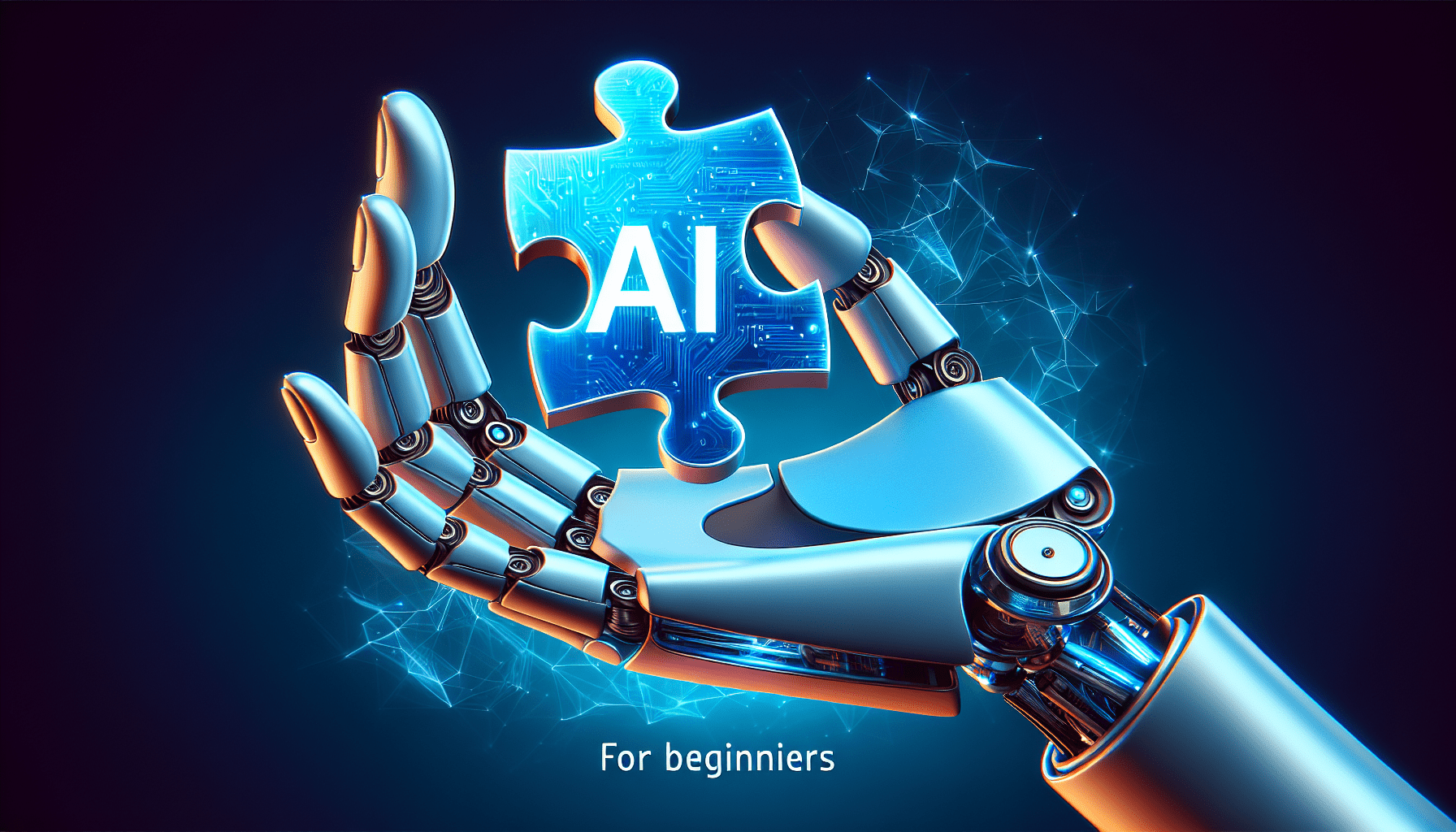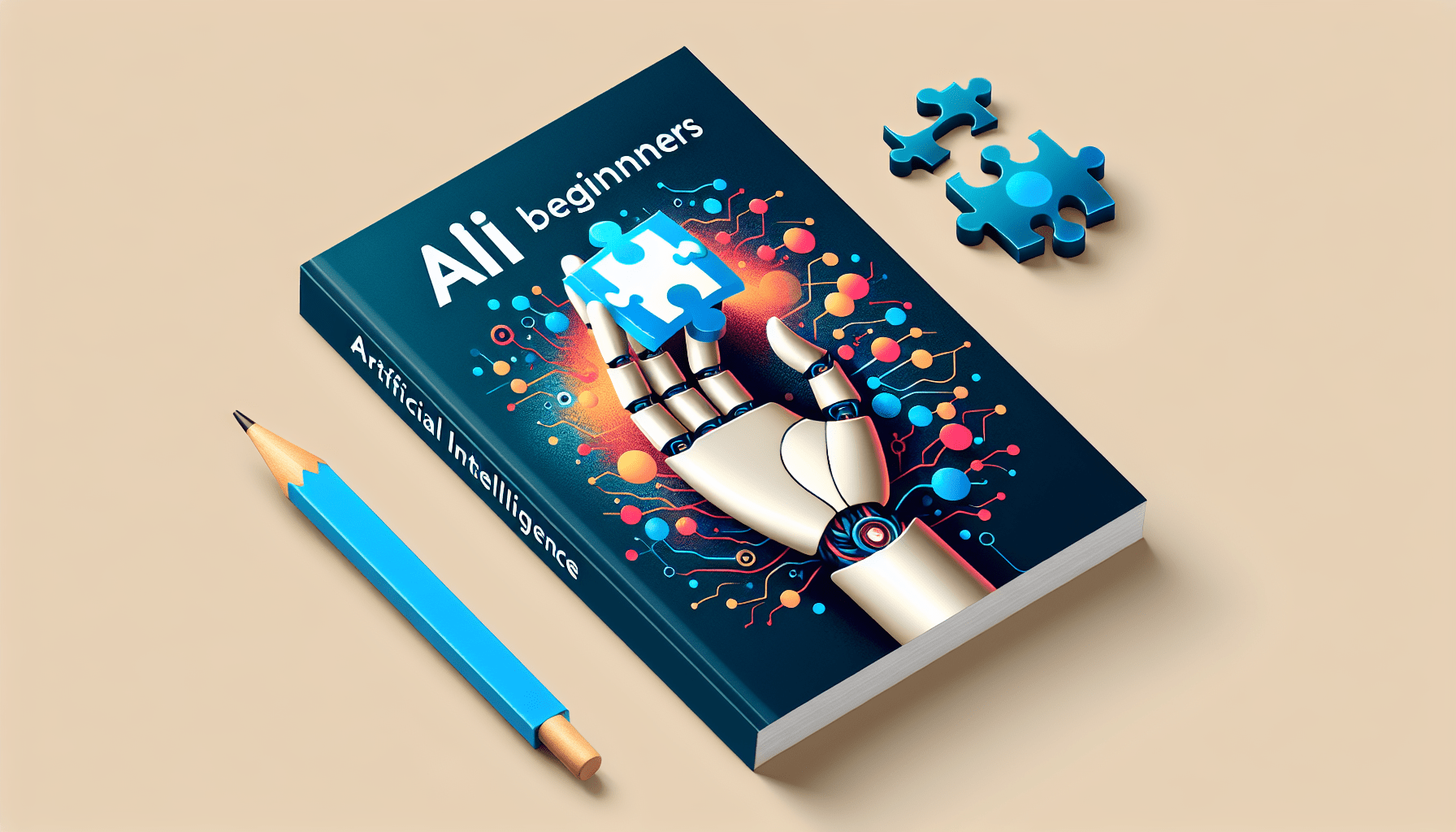Have you ever wondered what exactly artificial intelligence is and how it works? If you’re a beginner looking to understand the basics of this revolutionary technology, then “Artificial Intelligence Simplified: A Guide for Beginners” is the perfect starting point for you. In this concise and easy-to-understand guide, you will be introduced to the world of AI, its applications, and the key concepts that underpin its functionality. Whether you are simply curious about AI or eager to venture into this exciting field, this guide will demystify the complexities and provide you with a solid foundation to begin your journey into the realm of artificial intelligence.

What is Artificial Intelligence?
Artificial Intelligence (AI) refers to the capability of machines or computer systems to perform tasks that typically require human intelligence. It involves the creation of intelligent machines that can learn, reason, and perform tasks in a way that mimics human intelligence. AI encompasses a wide range of technologies, algorithms, and methodologies that allow machines to process information, analyze data, make decisions, and solve problems.
Definition of Artificial Intelligence
Artificial Intelligence is the simulation of human intelligence in machines that are programmed to think and learn like humans. It involves the development of computer systems that can perform tasks with a level of autonomy, adaptability, and intelligence that rivals or surpasses human capabilities. AI can be classified into two broad categories: Narrow AI (also known as Weak AI) and General AI (also known as Strong AI).
Goals and Applications of Artificial Intelligence
The primary goal of AI is to create machines or computer systems that can exhibit human-like intelligence and behavior. AI has numerous applications across various industries and sectors. In healthcare, AI can be used for diagnosis, treatment planning, and drug discovery. In transportation, AI can enable autonomous vehicles and optimize traffic management. In education, AI can enhance personalized learning experiences and provide intelligent tutoring. AI also finds applications in finance, customer service, cybersecurity, entertainment, and many other domains.
Types of Artificial Intelligence
Artificial Intelligence can be categorized into different types based on their capabilities and functionality. Four major types of AI include:
-
Machine Learning: Machine Learning involves training machines to learn from data and improve their performance over time without explicitly being programmed. It is a key subset of AI and is responsible for many breakthroughs in various fields.
-
Deep Learning: Deep Learning is a subfield of Machine Learning that focuses on training artificial neural networks to learn and make decisions by mimicking the structure and function of the human brain. It is particularly effective in processing complex data such as images, audio, and text.
-
Natural Language Processing: Natural Language Processing (NLP) enables machines to understand and interpret human language, enabling them to communicate with humans in a more natural and intuitive way. NLP is used in chatbots, voice assistants, and language translation systems.
-
Computer Vision: Computer Vision is the field of AI that enables machines to understand and interpret visual information from images or videos. It involves tasks such as image classification, object detection, and image segmentation.
Machine Learning
Introduction to Machine Learning
Machine Learning is a branch of AI that focuses on developing algorithms and models that allow machines to learn from data and improve their performance without explicit programming. In Machine Learning, computers are trained to recognize patterns and make predictions or decisions based on the input data.
Supervised Learning
Supervised Learning is a type of Machine Learning where the algorithm is trained on a labeled dataset. The algorithm learns to map input data to the corresponding desired output or label. With this knowledge, the algorithm can make predictions on new, unseen data.
Unsupervised Learning
Unsupervised Learning is a type of Machine Learning where the algorithm is trained on unlabeled data. The goal is to discover patterns or relationships within the data without any prior knowledge of the output. Unsupervised Learning is often used for clustering, anomaly detection, and dimensionality reduction.
Reinforcement Learning
Reinforcement Learning is a type of Machine Learning where an agent learns to interact with its environment and maximize its cumulative reward. The agent explores the environment, takes actions, and receives feedback in the form of rewards or penalties. Through trial and error, the agent learns the optimal actions to achieve the desired outcome.
Deep Learning
What is Deep Learning?
Deep Learning is a subset of Machine Learning that focuses on training artificial neural networks with multiple layers called deep neural networks. These networks are designed to automatically learn hierarchies of representations from data, enabling them to recognize complex patterns and make accurate predictions.
Neural Networks
Neural Networks are computational models inspired by the structure and function of the human brain. They consist of interconnected nodes called neurons, organized in layers. Each neuron receives input, performs a mathematical operation, and produces an output. Deep neural networks can have many layers, allowing them to learn and extract increasingly complex features from the input data.
Training Deep Learning Models
Training deep learning models involves feeding them with large amounts of labeled data and optimizing their internal parameters through a process called backpropagation. Backpropagation calculates the gradients of the model’s parameters with respect to a given loss function and updates the parameters accordingly. This iterative process continues until the model achieves satisfactory performance on the training data.
Natural Language Processing
Overview of Natural Language Processing
Natural Language Processing (NLP) is a field of AI that involves the interaction between computers and human language. It focuses on enabling machines to understand, interpret, and generate human language in a way that is natural and meaningful to humans.
Tokenization and Text Preprocessing
Tokenization is the process of breaking down text into individual words, phrases, or sentences, called tokens. This step is essential for further analysis and processing of textual data. Text preprocessing involves cleaning the text by removing noise, such as punctuation, stop words, and special characters.
Sentiment Analysis
Sentiment Analysis, also known as opinion mining, aims to determine the sentiment or emotion expressed in a piece of text, such as positive, negative, or neutral. It is widely used in social media monitoring, customer feedback analysis, and market research.
Named Entity Recognition
Named Entity Recognition (NER) is the process of identifying and classifying named entities in text, such as person names, organization names, locations, and dates. NER is crucial for information extraction, question answering, and text summarization tasks.

Computer Vision
Understanding Computer Vision
Computer Vision is a field of AI that focuses on enabling machines to gain a high-level understanding of visual information from images or videos. It involves tasks such as image recognition, object detection, image segmentation, and scene understanding.
Image Classification
Image Classification is the task of assigning a label or a class to an image based on its content. This is achieved by training a deep neural network on a large dataset of labeled images, enabling the model to recognize and classify different objects or scenes.
Object Detection
Object Detection is the task of identifying and localizing multiple objects within an image or video. It involves drawing bounding boxes around the detected objects, indicating their locations and classes.
Image Segmentation
Image Segmentation aims to divide an image into meaningful segments or regions based on the underlying objects or boundaries. This task is essential for applications such as autonomous driving, medical imaging, and image editing.
Expert Systems
Definition of Expert Systems
Expert Systems are AI systems that replicate the knowledge and problem-solving abilities of human experts in a specific domain. These systems are built using rules, heuristics, and knowledge bases to provide expert-level advice, recommendations, and solutions.
Components of Expert Systems
Expert Systems typically consist of three main components: a knowledge base that stores domain-specific knowledge, an inference engine that applies reasoning to the knowledge base, and a user interface that enables interaction between the system and the user.
Advantages and Disadvantages
Expert Systems have several advantages, such as providing consistent and reliable expert advice, reducing human errors, and improving efficiency in decision-making processes. However, they also have limitations, including the difficulty of capturing and representing all expert knowledge accurately, the need for continuous updating and maintenance, and the inability to handle novel or ambiguous situations outside their domain.

Ethics and Artificial Intelligence
AI Bias and Fairness
AI systems are susceptible to bias, which can lead to unfair and discriminatory outcomes. Bias can be introduced through biased training data, biased algorithms, or biased decision-making processes. Ensuring fairness and addressing bias in AI is crucial to prevent unintended negative consequences and to promote ethical AI practices.
Privacy Concerns
The widespread use of AI and the collection of massive amounts of data raise privacy concerns. AI systems often require access to personal data to work effectively, which can potentially compromise individuals’ privacy and data security. Striking a balance between the benefits of AI and protecting individual privacy is a significant challenge for society.
Autonomous Weapons
The development of autonomous weapons powered by AI raises ethical concerns related to their deployment and potential misuse. The lack of human control over autonomous weapons systems raises questions about accountability, legal frameworks, and the potential escalation of conflicts. It is essential to establish clear guidelines and ethical standards to ensure the responsible development and use of AI-powered weapons.
Artificial Narrow Intelligence vs. Artificial General Intelligence
Differences between ANI and AGI
Artificial Narrow Intelligence (ANI) refers to AI systems that are designed to perform specific tasks with high competence, but they lack the ability to generalize their knowledge to new domains or tasks. In contrast, Artificial General Intelligence (AGI) refers to AI systems that possess human-level intelligence and can understand, learn, and apply knowledge across a wide range of tasks and domains.
Importance of AGI
While ANI has proven to be extremely valuable in many applications, the pursuit of AGI is driven by the desire to create machines that can replicate and surpass human intelligence in all aspects. AGI has the potential to revolutionize various industries and solve complex problems that require a deep understanding of human cognition and behavior.

The Future of Artificial Intelligence
AI in Healthcare
AI has the potential to transform healthcare by enabling more accurate diagnosis, personalized treatment plans, and better disease prevention. AI can analyze large amounts of patient data, identify patterns, and assist in early detection of diseases. It can also improve patient outcomes through precision medicine and assist healthcare professionals in making informed decisions.
AI in Transportation
AI is shaping the future of transportation with the development of autonomous vehicles, intelligent traffic management systems, and predictive maintenance techniques. AI-powered systems can optimize traffic flow, reduce accidents, and enhance the overall efficiency and safety of transportation networks.
AI in Education
AI has the potential to revolutionize education by personalizing learning experiences, providing intelligent tutoring, and automating administrative tasks. AI-powered educational systems can adapt to individual student needs, offer tailored content, and provide real-time feedback to enhance learning outcomes.
Resources for Learning Artificial Intelligence
Books and Online Courses
There are numerous books and online courses available to learn about Artificial Intelligence. Some popular books include “Artificial Intelligence: A Modern Approach” by Stuart Russell and Peter Norvig, “Deep Learning” by Ian Goodfellow, Yoshua Bengio, and Aaron Courville. Online platforms like Coursera, Udemy, and edX offer AI courses from top universities and experts in the field.
AI Research Journals
There are several reputable AI research journals where experts publish their work and advancements in the field. Some renowned journals include the “Journal of Artificial Intelligence Research,” “Neural Information Processing Systems (NeurIPS),” and “IEEE Transactions on Pattern Analysis and Machine Intelligence.”
Online AI Communities
Being part of online communities and forums can provide valuable insights, resources, and opportunities for networking with fellow AI enthusiasts and professionals. Platforms like Reddit, Stack Exchange, and GitHub host active communities focused on AI, Machine Learning, and related topics.
In conclusion, Artificial Intelligence is a rapidly advancing field with a wide range of applications and subfields. From Machine Learning and Deep Learning to Natural Language Processing and Computer Vision, AI is transforming industries and shaping the future. However, ethical considerations, such as AI bias, privacy concerns, and responsible development, are essential to ensure the responsible and beneficial use of AI technologies. With the availability of resources, such as books, courses, research journals, and online communities, individuals can embark on the journey of learning AI and contributing to its development. The future of Artificial Intelligence holds immense potential in healthcare, transportation, education, and beyond, and it is crucial for society to embrace the opportunities and address the challenges that lie ahead.







Leave a Reply